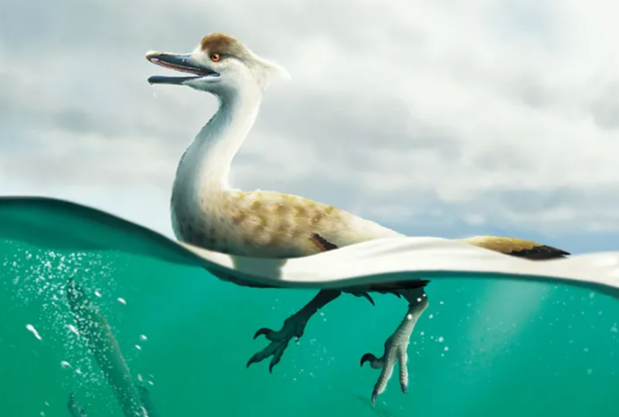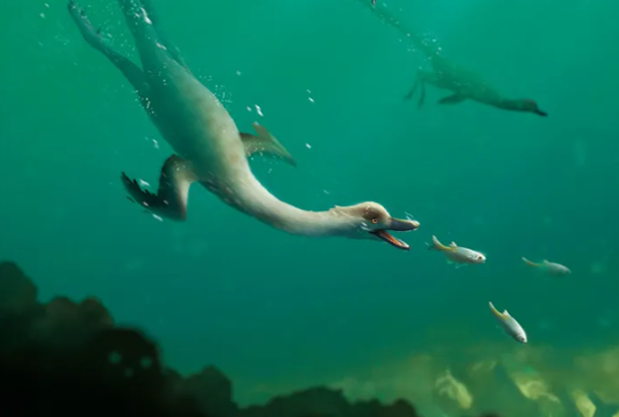
Paleontologists have discovered a species of dinosaur that may have been able to swim. The species has been named Natovenator polydontus and was discovered in the Gobi Desert of Mongolia.
Natovenator lived 145 to 66 million years ago in Mongolia during the Upper Cretaceous period.
A study that was published in Communications Biology earlier this month argues that the newly-discovered dinosaur may have possessed appropriate adaptations for swimming.
Natovenator, the swimming dinosaur
The Natovenator skeleton discovered in Mongolia was reportedly well-preserved. This allowed researchers from Seoul National University, the University of Alberta, and the Mongolian Academy of Sciences to study the specimen in close detail.
According to the collaborative research paper, “Its body shape suggests that Natovenator was a potentially capable swimming predator.”
The scientists found that the dinosaur had “several articulated dorsal ribs that are posterolaterally oriented to streamline the body as in diving birds. Additionally, the widely arched proximal rib shafts reflect a dorsoventrally compressed ribcage like aquatic reptiles.”
The Natovenator was a very small theropod with hollow bones and three clawed toes on each limb. It had a long goose-like neck. Its snout was full of holes for nerves. This may possibly indicate that it had a sensitive facial sense of touch much like that of a crocodile that could have been used to detect prey in the water.
Paleontologists noted that the Natovenator is similar to another dinosaur discovered in Mongolia called Halszkaraptor. Both dinosaurs may have used their forearms to propel themselves through the water.
The discovery of Natovenator will fuel further speculation in the field of paleontology. Scientists have long debated whether some dinosaurs were capable of swimming or whether they could have adapted for hunting in aquatic or semi-aquatic conditions.
If the Natovenator was indeed a keen swimmer, it would have shared the waters of the Cretaceous period with several other predators. Earlier this year, scientists in Australia reported they might have discovered a new species of prehistoric crocodile. Its last meal was a young dinosaur.
The Gobi Desert, where the fossil was found, is now devoid of water. However, there is evidence the region might have contained lakes and other bodies of water millions of years ago.

Other finds, this year
Natovenator is one of several dinosaur discoveries and research milestones this year. In August, a massive sauropod skeleton was found by scientists in Portugal. At twenty-five meters (eighty-two feet) long, it might be the biggest dinosaur that has ever been unearthed in Europe.
The same month, a drought in Texas revealed the footprints of a dinosaur that had been frozen in time for 113 million years. River water washing a pile of silt and sediment over the footprints was responsible for their preservation.
This year, new findings have also contributed to the scientific understanding of the mass extinction event that ended the dinosaurs’ reign over Earth. For example, scientists are keen to research an asteroid impact crater that was discovered off the coast of West Africa. The crater is roughly sixty-six million years old and corresponds with the date of the dinosaurs’ extinction.
Another study conducted in October suggests that a tsunami caused by the asteroid impact could have contributed significantly to the demise of the dinosaurs. The massive tsunami resulted in significant damage to landmasses tens of thousands of kilometers away from its point of origin.
See all the latest news from Greece and the world at Greekreporter.com. Contact our newsroom to report an update or send your story, photos and videos. Follow GR on Google News and subscribe here to our daily email!



